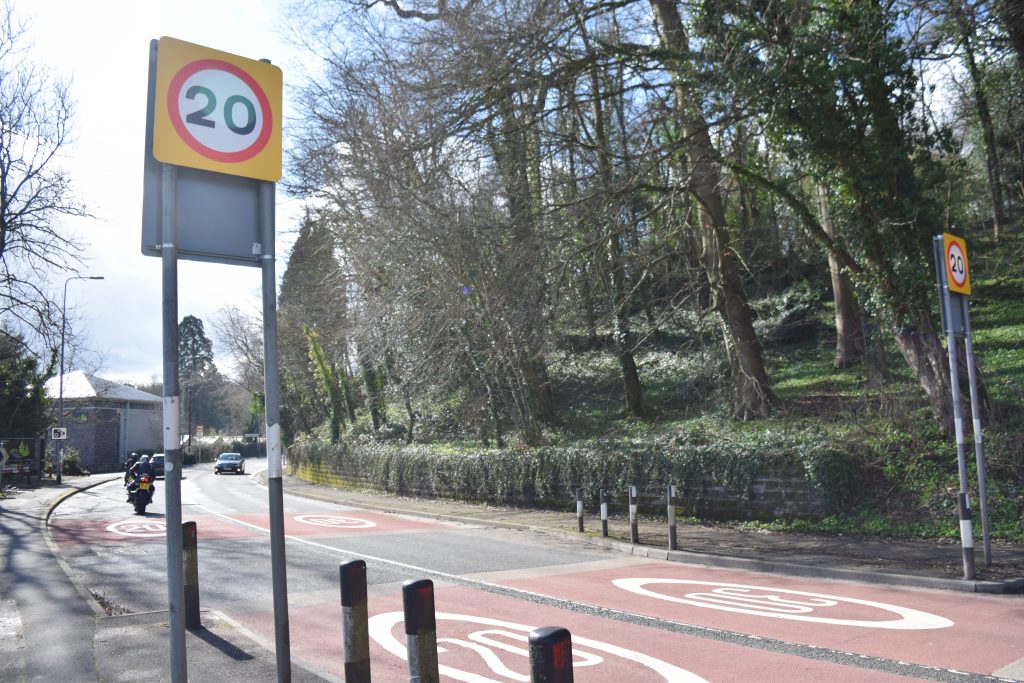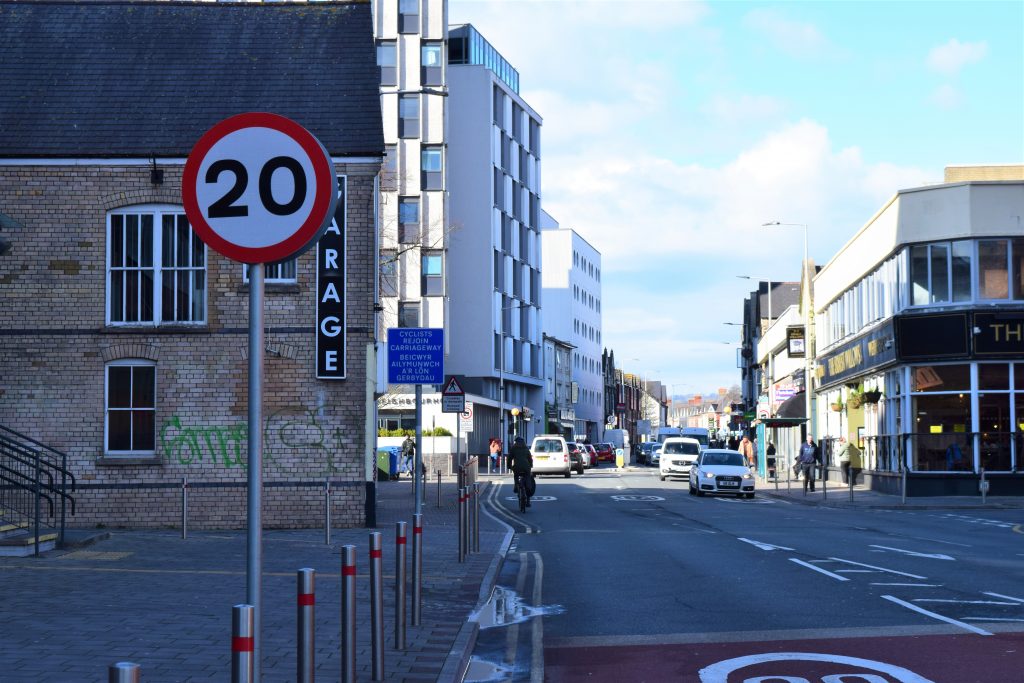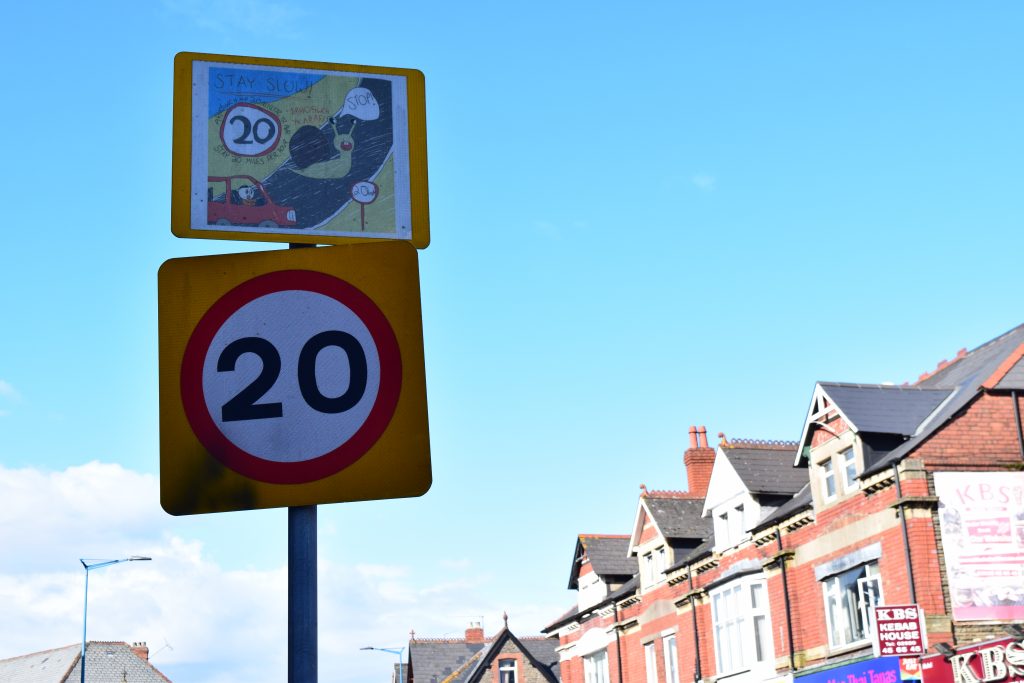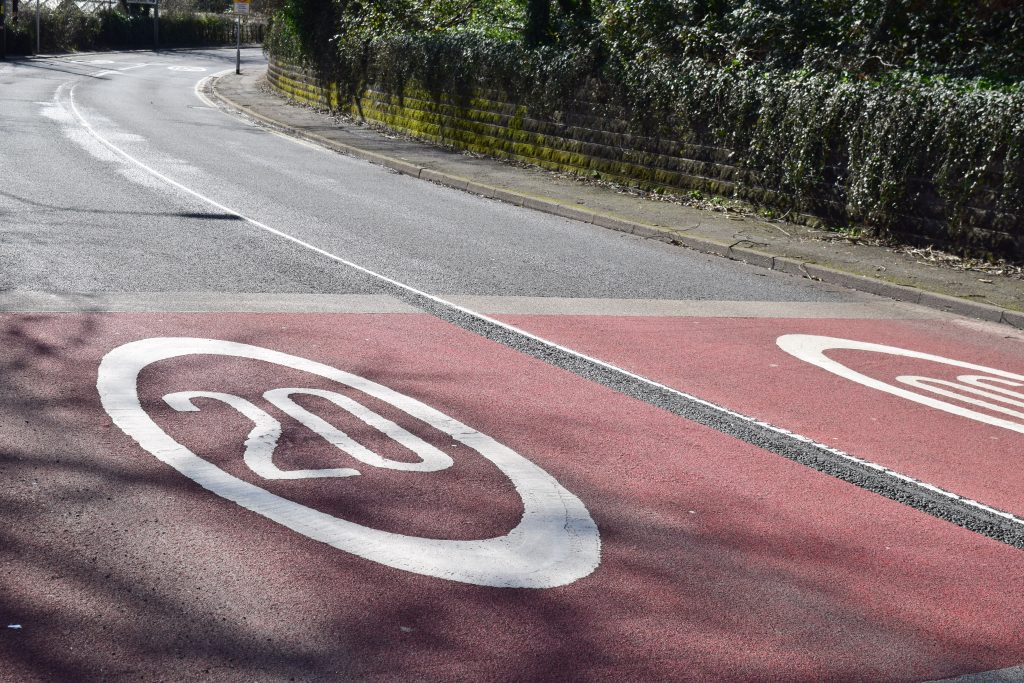Author: Dr Lucy Baker
For the full-length discussion article ‘Can 20 mph speed limits reduce community severance?’ please follow this link: https://think.aber.ac.uk/20mph-and-health/

Summary
There is a clear imperative to reduce average speeds and excessive speeding to prevent injury and death. One approach to achieve this is to use strategically placed infrastructure that slows traffic. In the UK, this approach has led to ‘traffic calmed’ 20 mph speed zones. Another approach is to enforce a law that limits traffic to a given reduced speed, recommended by the World Health Organisation as 20mph in areas where vulnerable road users and vehicles mix. Both interventions are proven to improve road safety.
As 20 mph speed limits are becoming more widespread, there is a discussion around what impact the measure can have on community severance.
Bringing together research on community severance, road safety and 20 mph speed limits, this article explores the contributing factors to community severance and how and why reducing speed limits could help to tackle it. The article highlights the importance of using additional interventions with 20 mph speed limits to tackle the multiple factors that contribute to community severance, such as traffic volume, built environment design and traffic speed. It also explores how community severance affects different people to a greater and lesser extent, and what this means in terms of reducing community severance through a combination of reducing both traffic speed and volume, road width and fit-for-purpose inclusive infrastructure.



Images by Dr Lucy Baker
The article suggests:
- 20 mph speed limits could be beneficial as part of a strategy against community severance. These are most effective when used with other measures that reduce traffic and improve the built environment for pedestrians and cyclists, including vulnerable road users and those most affected by traffic.
- 20 mph speed limits could improve the quality and safety of spaces to encourage and facilitate walking and cycling.
- 20 mph speed limits could help to tackle health inequalities. They could positively impact the mobility of people with restricted movement, people with disabilities, older people and children. This is because slower speeds give drivers more time to react, and give vulnerable adults and children more time to cross roads and to assess risk when crossing roads, which could improve the chances of their safe crossing.
- Additionally, 20 mph speed limits could reduce the severity of road collision injuries. This will benefit everyone, but particularly those more likely to die in collisions because of their vulnerability relating to age, health conditions, or disability.
- However, in places with relatively low volume of traffic and without adequate crossing infrastructure, a speed limit of 20 mph could benefit some people more disproportionately than others. For example, the most able may find more opportunities to cross a road in slower moving traffic whereas vulnerable people could continue to experience difficulties in navigating spaces where they encounter roads and vehicles even when traffic speeds are slowed to 20 mph. The more the speed limit is enforced, the closer the average speed will be to 20 mph, the smaller the gap in that inequality. Effective infrastructure will be required that adequately supports pedestrians, wheelchair users, and cyclists to get about, even in low volume, slower moving, traffic.
- In places with high traffic density, additional measures are needed in addition to 20ph speed limits to tackle community severance that will reduce traffic volume to ensure vehicles do not dominate places. This will ensure people living in deprived communities will equally benefit from reduced speed limits as much as those living in quieter, more affluent suburbs.
In the spirit of academic peer review, THINK welcome referenced response blogs to encourage open discussion. If you would like to write a response blog please email think@aber.ac.uk with the subject line 'Blog Response'